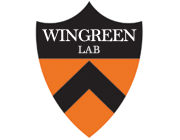Chromatin mechanics dictates subdiffusion and coarsening dynamics of embedded condensates
Publication Year
2021
Type
Journal Article
Abstract
DNA is organized into chromatin, a complex polymeric material that stores information and controls gene expression. An emerging mechanism for biological organization, particularly within the crowded nucleus, is biomolecular phase separation into condensed droplets of protein and nucleic acids. However, the way in which chromatin impacts the dynamics of phase separation and condensate formation is poorly understood. Here we utilize a powerful optogenetic strategy to examine the interplay of droplet coarsening with the surrounding viscoelastic chromatin network. We demonstrate that droplet growth dynamics are directly inhibited by the chromatin-dense environment, which gives rise to an anomalously slow coarsening exponent, β ≈ 0.12, contrasting with the classical prediction of β = 1/3. Using scaling arguments and simulations, we show how this arrested growth can arise due to subdiffusion of individual condensates, predicting β ≈ α/3, where α is the diffusive exponent. Tracking the fluctuating motion of condensates within chromatin reveals a subdiffusive exponent, α ≈ 0.5, which explains the anomalous coarsening behaviour and is also consistent with Rouse-like dynamics arising from the entangled chromatin. Our findings have implications for the biophysical regulation of the size and shape of biomolecular condensates and suggest that condensate emulsions can be used to probe the viscoelastic mechanical environment within living cells.
Journal
Nature Physics
Volume
17
Pages
531-538
Date Published
04/2021
ISBN
1745-2481

